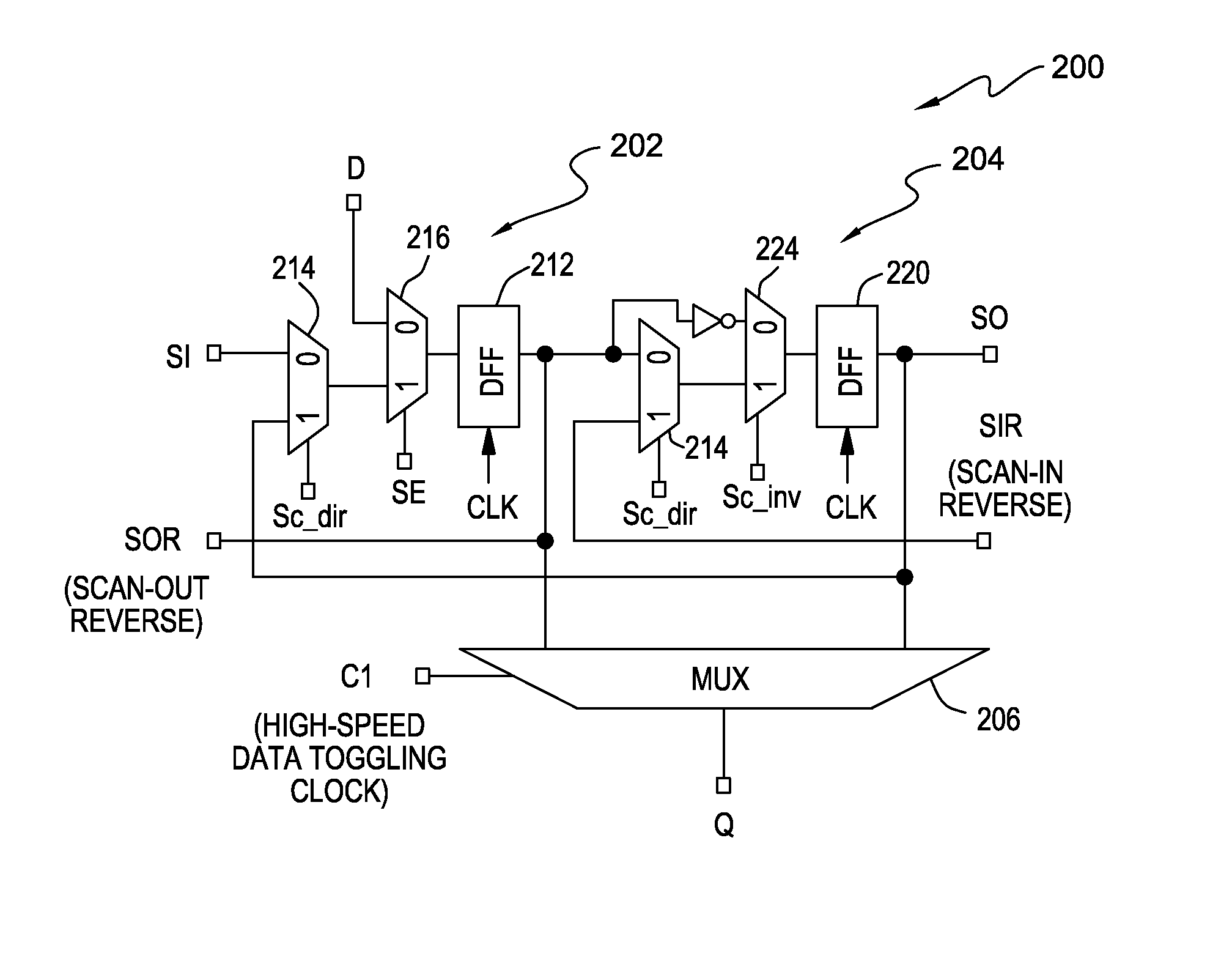Scan chain latch design that improves testability of integrated circuits
a technology of integrated circuits and latches, applied in the field of circuit testing, can solve the problems of scan chain adjacency problems, broken/shorted/stuck-at wires, and limited functionality of standard scan chains
- Summary
- Abstract
- Description
- Claims
- Application Information
AI Technical Summary
Benefits of technology
Problems solved by technology
Method used
Image
Examples
Embodiment Construction
[0025]The present invention relates to scan chains used for integrated circuit diagnostics. Scan chains are widely used in modern IC for rapid test and debug purposes. The recent emergence of emission based test tools imposes additional requirements on scan chains. To extract useful information from emission images, a high degree of control is needed over stimuli applied to a circuit under test. In this respect, functionality of standard scan chains is quite limited. For example, to capture a time resolved emission waveform, the same stimulus may have to be applied thousand or even million times. Using standard scan chain, the entire scan chain would have to be reloaded every time the stimulus is reapplied. This results in unacceptably long acquisition time, because the frequency of stimulus exercising is the frequency of scan chain clock (hundreds of MHz) divided by scan chain length.
[0026]Other limitations of standard scan chains include the scan chain adjacency problem, and broke...
PUM
 Login to View More
Login to View More Abstract
Description
Claims
Application Information
 Login to View More
Login to View More - R&D
- Intellectual Property
- Life Sciences
- Materials
- Tech Scout
- Unparalleled Data Quality
- Higher Quality Content
- 60% Fewer Hallucinations
Browse by: Latest US Patents, China's latest patents, Technical Efficacy Thesaurus, Application Domain, Technology Topic, Popular Technical Reports.
© 2025 PatSnap. All rights reserved.Legal|Privacy policy|Modern Slavery Act Transparency Statement|Sitemap|About US| Contact US: help@patsnap.com



